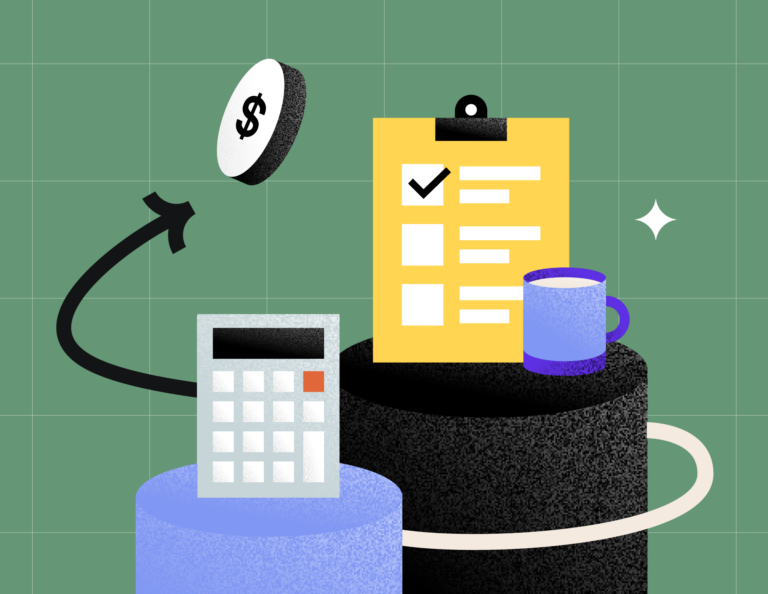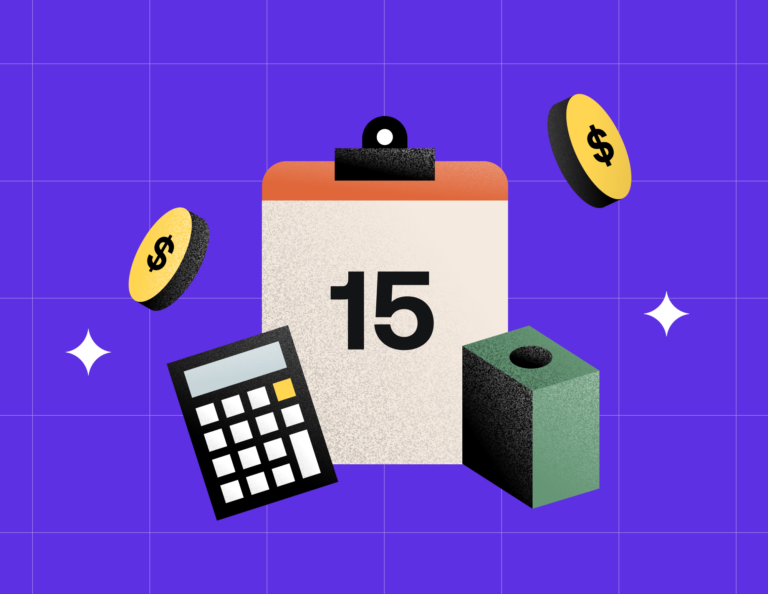In today’s economy, we see many workers who either take on a side hustle or leave full-time employment altogether to pursue more flexible or creative work.
Ride-sharing services typically snag most of the headlines in the conversation around flexibility, but the reality is that there’s a boon of workers across many sectors turning toward flexible work arrangements focused on high-touch creative services. Self-employed creatives, like the ones on our platform, are one major collective of this workforce.
These creatives are highly skilled workers who are almost always passionate about the type of work they perform. They include photographers, graphic designers, web designers, small business consultants and artists, among many others. While they differ from ride-share drivers when it comes to the level of passion about their work, they do appreciate many of the same benefits of flexible work arrangements: the ability to build their own schedules, control how often they work and determine which projects they’d like to take on. And of course, they all need a paycheck to sustain their day-to-day livelihood.
As the voice and measure of the U.S. self-employed, creative economy, it is important for us to understand and address trends around how they are getting paid (or not), and that’s why we surveyed these workers in October 2018. Read on to see the findings of how payments are affecting creatives.
METHODOLOGY
HoneyBook surveyed 1,162 self-employed creatives on its platform to better understand their approach to payments and, more importantly, ways to help them.
This survey was fielded from October 4 through October 17, 2018.
KEY FINDINGS
One of the most interesting topics we uncovered was around the role tipping plays in payments. Overall, 76% of self-employed creatives do not even consider asking for tips. Unsurprisingly, only 9% claim they “often” or “always” receive a tip. These two findings, meanwhile, are juxtaposed against the startling statistic that 78% of self-employed creatives worry about making ends meet.

Taken together, these statistics highlight a significant missed opportunity for self-employed creatives. Indeed, the data found that those who prompt tipping are almost 50 percent more likely to be tipped.
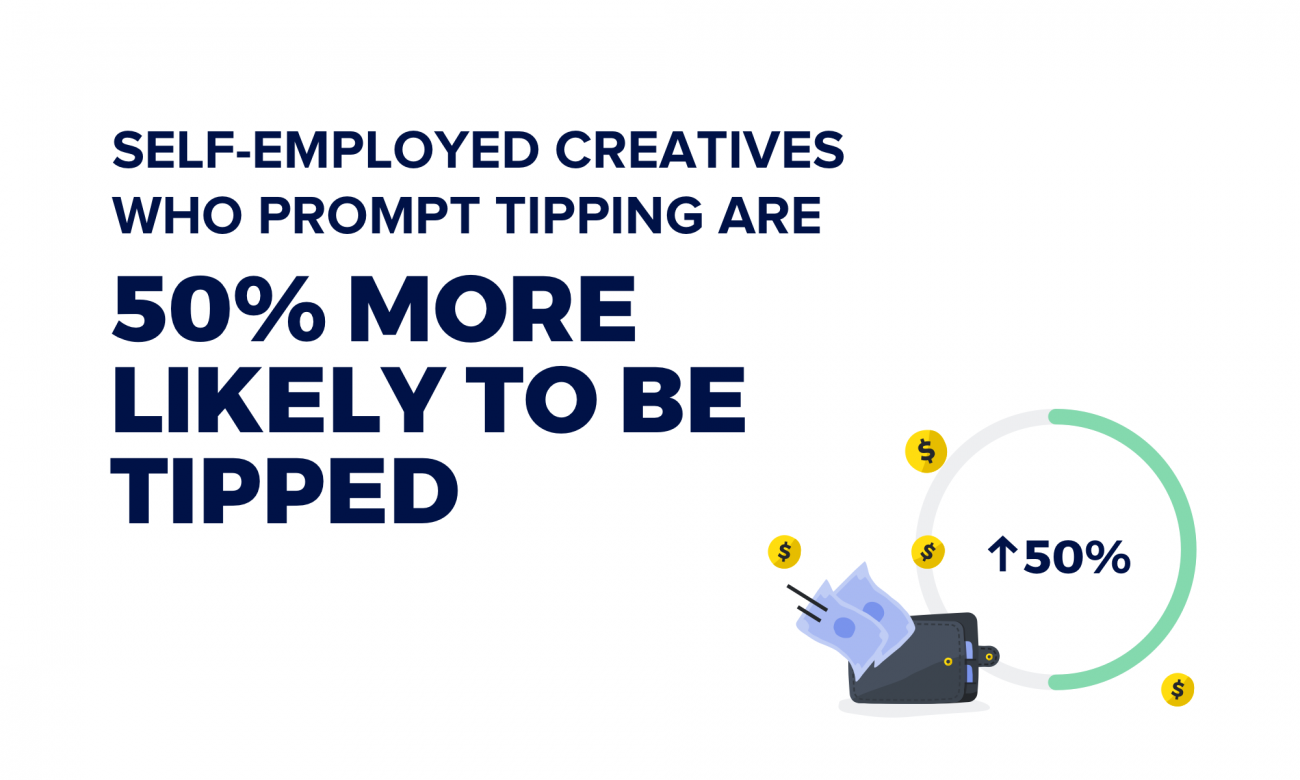
Beta trials of our Gratuity feature show that, apart from those who are already “often” or “always” getting tipped, self-employed creatives and freelancers who use Gratuity have the potential to earn an additional $4,558 per year. Looking at the photography industry alone, this rate could add over $200 million in tips annually in photographers’ pockets.
That’s why HoneyBook wants to equip America’s creative class to grow their business and increase their profitability by making tipping a standard and enabling an optional tipping functionality on invoices to boost their bottom line.
THE NEW WAY TO TIP
While 76% of the surveyed self-employed creatives do not prompt tipping, ride-sharing services like Uber and Lyft prompt tipping after every ride. Lyft has included tipping as part of its app since launching in 2012, while Uber added the feature as recently as May 2017 after increasing pressure from its drivers. While the actual percentage of how many passengers tip is inconclusive, both Uber and Lyft are reporting increases in overall frequency. This highlights how tipping flexible workers is becoming more habit forming.
Point-of-sale solutions like Square and ShopKeep also see evidence of increased tipping for counter services. Often referred to as “guilt tipping,” a customer taps on a percentage or dollar amount at the moment of payment, or the “no tip” feature. According to the Emily Post Institute, an authority on etiquette, patrons should offer occasional tips for exceptional counter service but not feel obligated to tip every time.
For HoneyBook’s community and other self-employed creatives, it’s important to keep in mind that ride-sharing services and handing someone a pre-made muffin are vastly different from services like planning a wedding or taking family photos. The latter are far more emotionally charged and allow for many more client interactions that could justify a customer being comfortable with tipping.
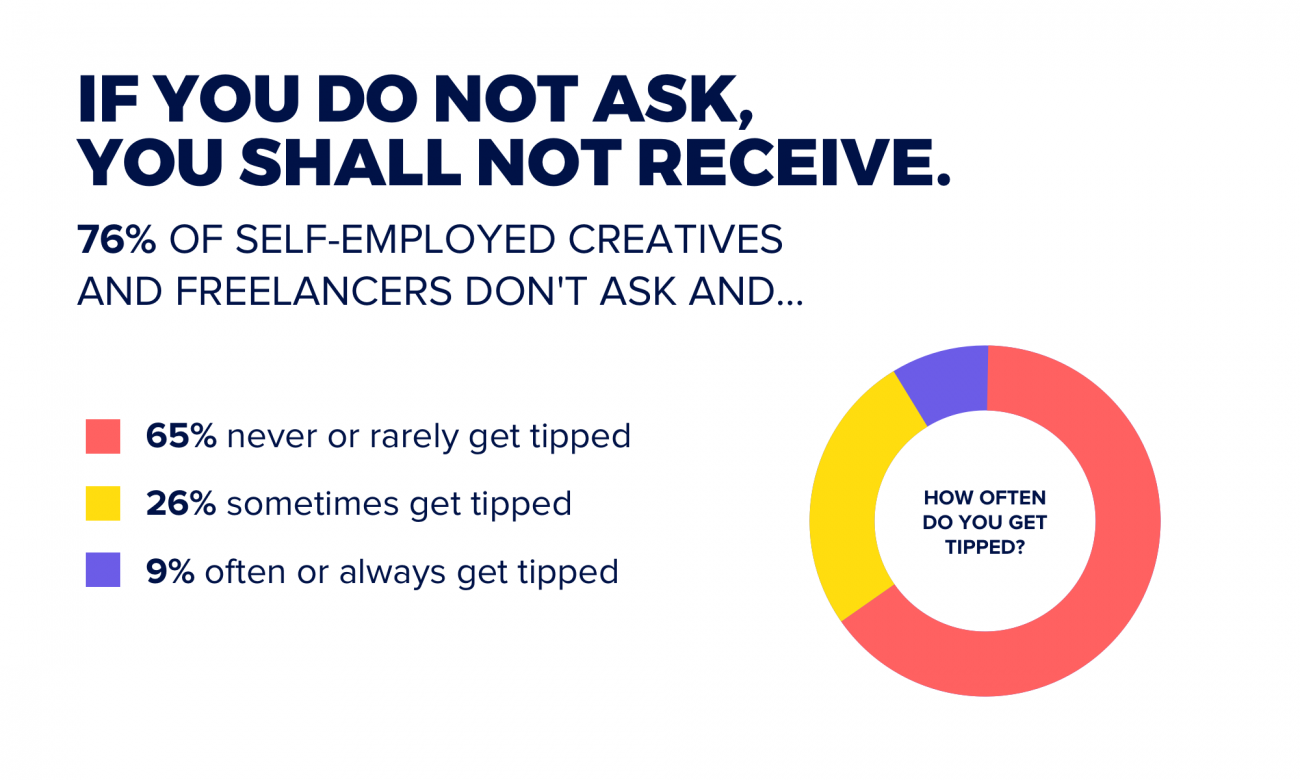
TIPS ADD TO YOUR BOTTOM LINE
The data shows that the saying “ask and you shall receive” holds true—or rather, “if you do not ask, you shall not receive.” For example, a report commissioned by HoneyBook in October 2017 found that despite the fact that 73% of creative entrepreneurs, both male and female, hold bachelor’s degrees, over a third of the female creative entrepreneurs still make less than the minimum wage in 15 states. One of the reasons? The top reason reported was the lack of confidence in asking for more, charging a woman’s worth and negotiating with confidence.
In this case, HoneyBook members who received tips in a beta trial of its Gratuity feature added, on average, 15% more to their bottom line.
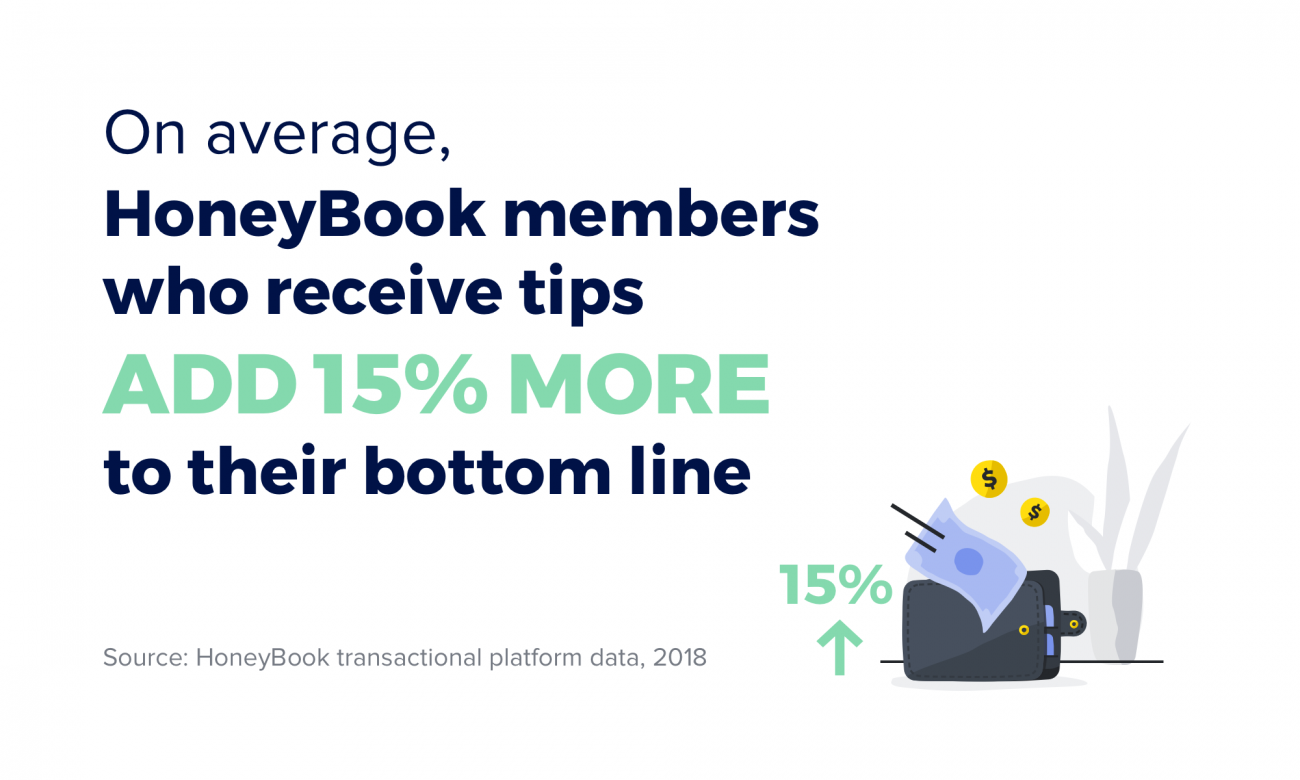
Self-employed creatives are averaging approximately $1,395 per project with an average of 5.2 projects per month. Those who receive tips are adding to their bottom line, with no additional time or operating expense required. Thus, these tips only increase net margins.
Of those who do receive tips:
- 60% receive between 1-10% of the overall bill as a tip
- 23% receive between 11-20% of the overall bill as a tip
ROOM FOR TIPS YEAR ROUND
The holiday season does not appear to positively or negatively impact those who do receive tips.
- 86% reported the level of tipping remains the same during the holidays.
To be sure, tipping of this kind is still a relatively new phenomenon, but this report highlights how those who make the ask can add percentage points to their bottom line. While clients may not tip all the time, there’s no harm in asking—and we expect to see tipping rise as digital payments grow.
HERE’S WHAT YOU CAN DO
Include HoneyBook’s Gratuity In All of Your Invoices
“HoneyBook’s Gratuity feature is a no-brainer,” Dominique Broadway, a financial and business coach, said. “This one feature alone can help to drastically increase your revenue, and make it extremely easy for your clients to show their appreciation for you going above and beyond with your services.”
Praise Santos, a HoneyBook member adds, “I didn’t realize what an opportunity there was to make a big impact on my bottom line just by prompting for tips. I was fortunate enough to participate in HoneyBook’s Gratuity trial, and saw that just by subtly prompting customers, my income was boosted around 15 percent. It’s true that not everyone will tip, but that makes me all the more motivated to provide excellent service, and my customers often show their appreciation through gratuity.”
The net-net: If you don’t ask, you’ll never receive. Providing excellent service and then a simple way for clients to tip are the key steps.
Provide Excellent Service or Work Product and Let Clients Know When You Went Above and Beyond
Self-employed creatives should keep the following approaches in mind:
- Deliver a strong customer experience, including frequent communication about the status of a project.
- When possible, offer customization based on the client’s preferences. In this situation, if you are offering the client an unusual or “off the shelf” service, let them know you typically don’t offer this but are happy to make an exception.
- Build rapport through genuine interactions. Get to know the customer’s names and preferences through conversation and then weave them in when appropriate to develop a stronger relationship.
- At the same time, some clients may prefer a much more transactional approach. You should look for these cues and adapt as needed.
Build Tips Into Your Usual Invoicing to Make It Seamless for the Client
Verbally asking for tips is a no-no. But including an easy and seamless tip functionality with your online invoices at the time the client is issuing payment can make a difference. HoneyBook invoices include a space for gratuity on each invoice (you can always choose to turn it off) so your clients can include a tip of any amount.
Want to Boost Your Bottom Line?
Prompt a tip. Try our Gratuity Feature >

